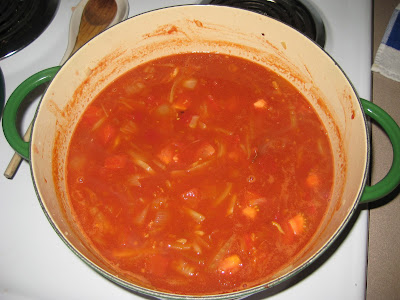When I was in college I was fortunate enough to study a semester abroad in Spain. I fell in love with the Spanish culture and indulged in many of their delicious tapas (small-portioned, appetizer-like dishes). My apartment building was also home to a bakery on the ground floor where I bought fresh Spanish tortilla and ate it every morning before classes. In Spain, a tortilla is a thick omelette usually consisting of potato and onion held together by egg, although other little goodies can be mixed in as well. It is usually cut into wedges and can be served hot or cold. I used to buy a whole round tortilla and store it in the fridge. I would cut myself a slice every morning and heat it in the oven.
Years later, I wound up dating my husband whose family is Spanish (lucky me!) and his awesome momma would make me my very own tortilla whenever we would come over. But since Paleo, I thought my tortilla-eating days were over. That was until I was trying to think of how to get rid of some leftover turnip in my vegetable drawer.
I usually substitute turnips for potatoes in recipes like beef stew where you can hardly tell the difference. Why couldn't it work in a tortilla? I called my mother-in-law to make sure I had the method down right and busted out my frying pan ready to give it a whirl.
Now, there's no exact recipe to throw one of these together and seeing as I had two mis-matched blocks of turnip left, it's hard to tell you exactly how much you need. It also depends on the size of your frying pan. Mine is huge - 12" - so my amounts are much larger than if you have an 8" or 9" frying pan. I'm going to put the recipe below for the 12-incher that I made, but I encourage you to eyeball how full your pan is and work from there. I also spiced mine up with some good-quality Spanish chorizo and green onions I was lucky enough to have laying in the fridge, but this would be just as good with plain turnip and onion.
Ingredients
- 1/4 cup extra virgin olive oil
- Diced yellow turnip, make the pieces about 1" long (roughly 5 cups to fill a 12" frying pan)
- 1 large onion, chopped
- 3 green onions, sliced
- a few handfuls of diced Spanish chorizo
- 9 large eggs, beaten with a few pinches of salt mixed in (you need enough to cover the vegetables completely)
- salt and pepper, to taste
- Heat olive oil in a large frying pan over medium-high heat.
- Fry the turnips about 8-10 minutes until they begin to soften.Sprinkle with a few pinches of salt and fresh ground pepper.
- Add the onion and cook a few minutes more until the onions are translucent and the turnip will "smush" when pressed down with a wooden spoon.
- If your vegetables are still swimming in oil, drain them off to the side before returning to the pan with about a tablespoon's worth of oil. Stir in the green onions and chorizo and cook for another minute more.
- Cover the entire mixture with enough beaten egg to surround the sides and reach the top of the vegetables. Shake the pan lightly to ensure it all combines. When the omelette begins to solidify, use a spatula to loosen the sides and as much of the bottom as possible without breaking it up. Don't allow the bottom to burn.
- When the egg has risen and is mostly cooked to the top, place a plate on top of the frying pan and turn the pan over to allow the tortilla to release onto the plate. Add a little more oil if needed and return the tortilla to the frying pan to brown the other side. When the other side is golden brown and cooked through, remove from the frying pan and allow to cool slightly before cutting. The tortilla can be eaten warm right away, or stored in the fridge for quite a few days and eaten cold or reheated. I recommend you sprinkle it with more salt, to taste, before serving.
¡Buen Provecho!
 |
| because my frying pan is so large, I actually needed to use a platter to flip the tortilla |
 |
| whoops, the bottom got a little browner than I wanted, but luckily it didn't taste burned |
 |
| FIN! |




































